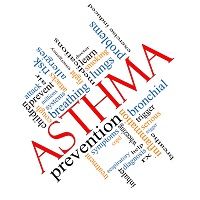Substantial Price Reduction Required for Asthma Treatment Mepolizumab to Meet Willingness-to-Pay Thresholds
Analysis revealed that adding mepolizumab resulted in a cost-effectiveness ratio of $385,546 per quality-adjusted life-year, or QALY; the price would need to be discounted by more than 70% to reach $100,000 per QALY, a common threshold at which insurers are willing to pay.

Although severe asthma affects less than 10% of asthma patients, it is marked by recurrent, critical exacerbations that pose the risk of fatal or near-fatal outcomes. As a result, severe asthma is associated with substantial morbidity, mortality, and asthma care costs.
Eosinophils have a central role in the pathogenesis of asthma and largely determine disease severity. The monoclonal antibody mepolizumab (Nucala/GlaxoSmithKline) targets interleukin 5, the main cytokine that controls eosinophil activity and proliferation. In patients with severe eosinophilic asthma, mepolizumab has been shown to reduce asthma exacerbations as well as chronic use of oral corticosteroids, and the U.S. Food and Drug Administration has approved mepolizumab for the treatment of severe eosinophilic asthma.
Because of the serious and frequently irreversible side effects of oral corticosteroids, safe corticosteroid-sparing treatments such as mepolizumab could be highly beneficial in managing severe eosinophilic asthma. The high cost of mepolizumab, however, poses an obstacle to increasing its use in patients with this type of asthma.
To assess the cost-effectiveness of adding mepolizumab to standard care and to compare it with the cost-effectiveness of standard care alone for adults with severe, uncontrolled asthma, an international team did an analysis, results of which were reported in a recent issue of Value in Health.
The team used a Markov model cohort framework to assess cost-effectiveness based on three states: asthma exacerbation, non-exacerbation, and death. Inputs to the model included data from the medical literature and drug costs obtained from Redbook. The team also did one-way sensitivity analyses to determine the robustness of their results.
In addition, they did scenario analysis to determine the mepolizumab price that would be cost-effective at common thresholds at which payers are willing to pay, including $50,000 per quality-adjusted life-year (QALY), $100,000 per QALY, and $150,000 per QALY.
The team found that mepolizumab could prevent nearly 24 exacerbations per patient over the course of a lifetime of treatment. They also found that, although more than $18,000 in costs could be offset by using mepolizumab to avoid exacerbations and reduce chronic oral corticosteroid use, adding mepolizumab would increase treatment costs by more than $600,000.
The team also reported that treatment with mepolizumab at the then-current Redbook price resulted in an estimated cost-effectiveness ratio of $385,546 per QALY, which would be unacceptable to payers. Cost-effectiveness estimates remained more than $300,000 per QALY even after the team varied the most influential parameters in a one-way sensitivity analysis to account for uncertainty in model input.
As a result of their analysis, the team concluded that the price of mepolizumab would need to be discounted by more than 70% to achieve an acceptable incremental cost-effectiveness ratio of $100,000 per QALY.